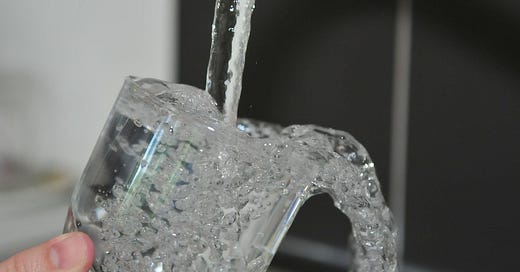Disputes over the planning and/or legal merits of specific development proposals do not wholly account for the apparent deficiencies in house building.
Other factors contribute to the slow pace or even abandonment of proposed housing schemes. One such factor is the limited amount of land zoned for residential use and the revised NPF published this week is intended to lead to an increase in residential zoned land. Another contributory factor is the lack of adequate water infrastructure. It is the latter which is the subject of this post.
I will look at;
the gatekeepers of 'feasibility' and 'capacity'
the inadequate state of water infrastructure
the challenges facing supply, especially those facing Greater Dublin which the Shannon Basin project will address
and, for paid subscribers, the challenges facing wastewater especially the Clonshaugh and Ringsend projects and the associated Judicial Reviews
FEASIBILITY AND CAPACITY – THE GATEKEEPERS
No large scale housing scheme is possible without it being feasible to provide water and/or wastewater service(s) of sufficient capacity to serve the proposed development.
The content required of a planning application is prescribed in article 22 of the Planning and Development Regulations 2001. By article 22(2A)(a), an application under section 34 of the Planning and Development Act 2000 ("PDA 2000") in respect of a Large Scale Residential Development shall be accompanied by;
"where it is proposed to connect the development to a public water or wastewater network, or both, evidence that Irish Water has confirmed that it is feasible to provide the appropriate service or services and that the relevant water network or networks have the capacity to service the development".
The requirement is of evidence "that Irish Water has confirmed" both the feasibility of connection and the capacity of both the supply and waste networks. The feasibility of connection is site specific, capacity relates to a much wider issue of the adequacy of water infrastructure.
THE STATE OF IRISH WATER INFRASTRUCTURE
Inadequate
At a conference of the Royal Institute of Architects and the Academy of Urbanism last Tuesday, the Chairman of Uisce Éireann (Irish Water, “UÉ”), Jerry Grant, said that the State's water and sewage infrastructure is “in a desperate state” because of “extraordinary complacency” and “passive indifference”. Mr Grant said that Dublin's water supplies had been “bled to the point where we are at the limit of sustainability.”
Last autumn, the Government approved UÉ's Strategic Funding Plan of €10.3bn for critical water infrastructure between between now and 2029, sufficient to support the last Government's house building target of 33,000/yr. Since then housing targets have increased to 50,000/yr under the new Programme for Government. In short, the committed capital expenditure for water infrastructure is insufficient to match the stated house building ambition of the new Government. UÉ is now seeking a further €1.7bn at a time when it is being said that public spending will need to be cut in the world's 'changed economic circumstances'.
The challenge facing UÉ in facilitating housing development is compounded because;
UÉ has no mandate and no budget to service land for development. That's regarded as speculative and it's for developers to fund, and secure planning permission.
The problem is not only one of an increasing population and of lower housing occupancy but of rising water demand (and associated waste) per person. It is expected that non-domestic water demand in the East and Midlands Region will grown by 73% by 2050 while the population will increase by 'only' a quarter.
Further, half of the Government's new homes are intended for the GDA, the area facing the most acute water infrastructure issues.
Freshwater
A single 50 year old pipe from the Ballymore Eustace water treatment plant in Co Kildare supplies water to approximately 877,000 people, about 40% of the GDA population. “We know there's about 25 leaks on it. It could blow up in the morning and cause us massive difficulty”, Mr Grant said.
The best known and biggest example of the required further investment is the 'Water Supply Project East and Midlands', intended to create a long term resilient supply for Dublin, Meath, Kildare and Wicklow from the Shannon Basin. An intention to proceed with the project was confirmed 30 years ago but it is unlikely to be completed within the next 10 years. A planning application to An Bord Pleanála ("the Board") is expected this year but that will not be without controversy and potential Judicial Review.
Wastewater
Wastewater inevitably follows from supply and is expected to grow in Dublin by more than 50% over the next 30 years.
Keep reading with a 7-day free trial
Subscribe to Irish Planning and Environmental Law to keep reading this post and get 7 days of free access to the full post archives.




